For three billion years, life on Earth existed in rhythm with the light and darkness created solely by the illumination of the Sun, Moon and stars. Today, artificial lights overpower the darkness and our cities glow at night, disrupting the natural day-night pattern and shifting the delicate balance of our environment. The negative effects of the loss of this inspirational natural resource might seem intangible. But a growing body of evidence links the brightening night sky directly to measurable negative impacts including
- Harming human health: Not All Artificial Light has the same impact. Exposure to blue light at night is particularly harmful. Unfortunately, most LEDs used for outdoor lighting (as well as computer screens, TVs, and other electronic displays) create abundant blue light. To minimize harm from blue light in your home, choose the right light bulb and download a colour temperature app that adapts your electronic screen to the time of day. Cool light during the day and warm light at night.

- Increasing energy consumption. Lighting that emits too much light or shines when and where it is not needed is wasteful. Wasting energy has huge economic and environmental consequences. Installing quality outdoor lighting could cut energy use by 60–70 percent, save billions of dollars and cut CO2 emissions.

- Affecting crime and safety. Increased outdoor lighting may make us feel safer, but can you see the guy standing right below the street lamp in the second picture?


- Disrupting the ecosystem and wildlife. Plants and animals depend on Earth’s daily cycle of light and dark rhythm to govern life-sustaining behaviours such as reproduction, nourishment, sleep and protection from predators. Scientific evidence suggests that artificial light at night has negative and deadly effects on many creatures including amphibians, birds, mammals, insects and plants.
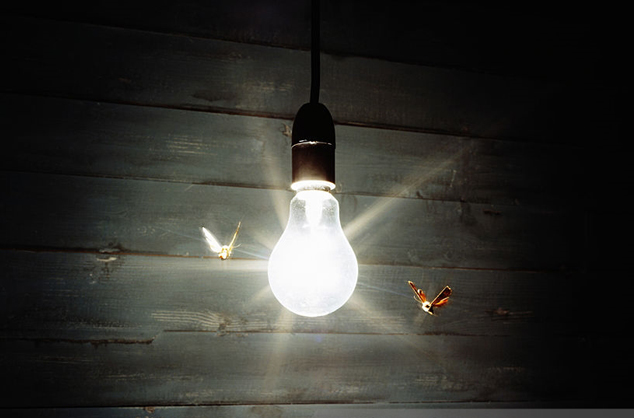
- Threatening star gazing. Tourist today, travel to far and remote places just to be able to observe dark skies. Unfortunately, with so many people living in brightly lit areas, a large majority of the population has never been able to observe the Milky Way properly. Many are unaware that with a truly dark sky the Milky Way can appear bright enough to cast a shadow. Light pollution affects every citizen. Fortunately, concerns about light pollution are on the rise and a growing number of scientists, homeowners, environmental groups and civic leaders are taking action to restore the natural night. Furthermore, each of us can implement practical solutions to combat light pollution locally, nationally and internationally.
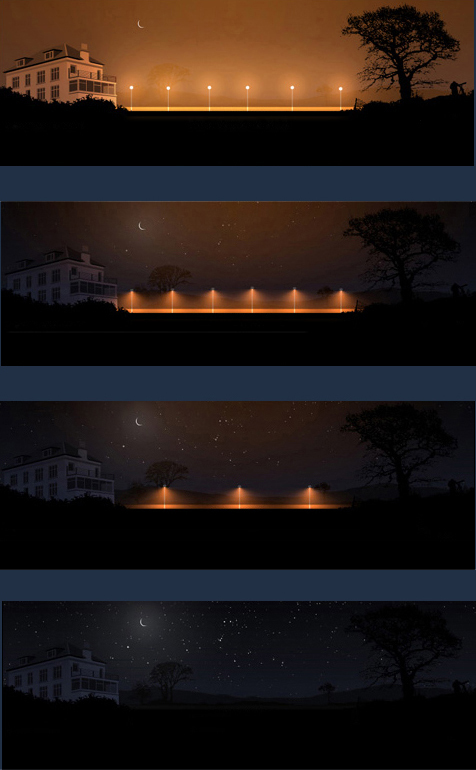
Most of us are familiar with air, water, and land pollution, but did you know that light is also a pollutant?
The inappropriate or excessive use of artificial light can have serious environmental consequences for humans, wildlife, and climate. Components of light pollution include:
Skyglow Glare
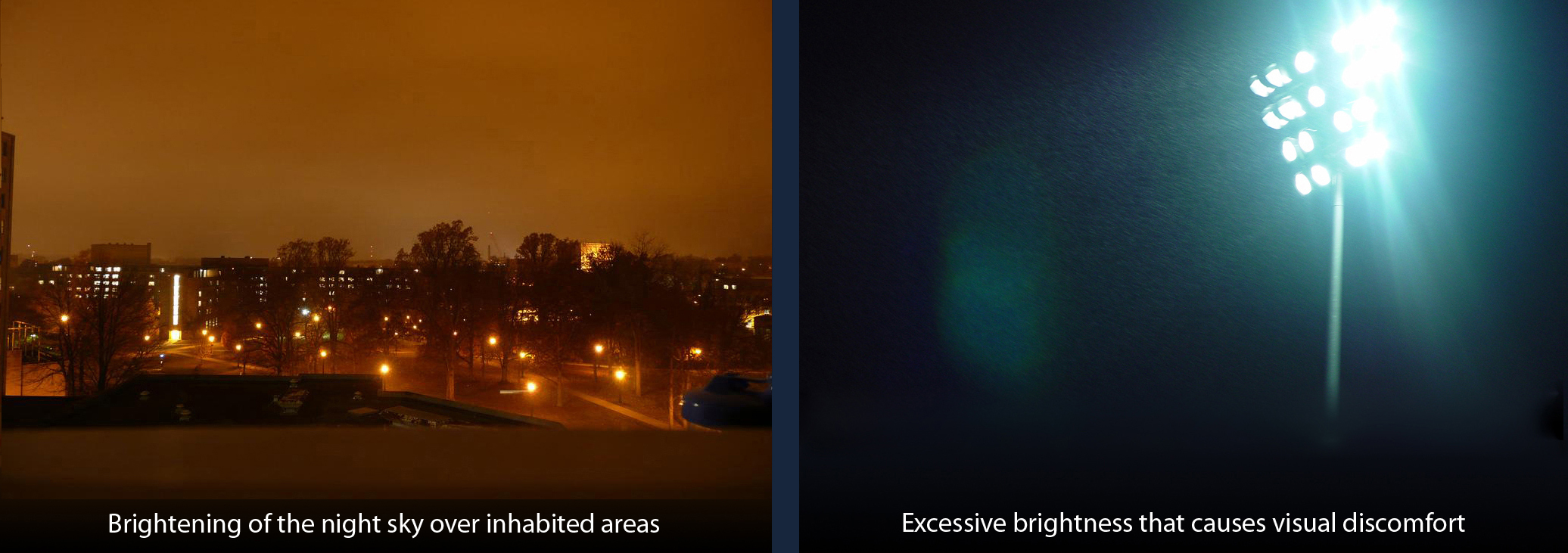
Light trespass Clutter

Much outdoor lighting used at night is inefficient, overly bright, poorly targeted, improperly shielded, and, sometimes unnecessary. This light, and the electricity used to create it, is being wasted by spilling it into the sky, rather than focusing it on to the objects and areas that need illumination.
If you are working in a city council, you may be wondering how you can improve your city´s illumination. Let us help you!
6 Tips
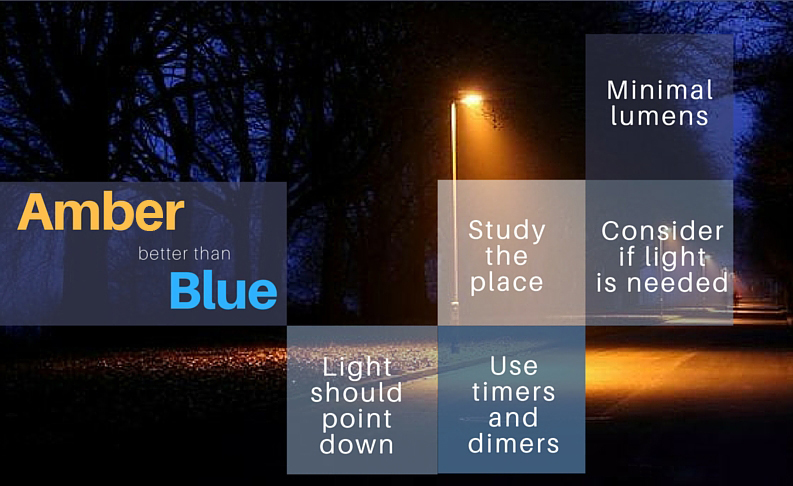

Choosing the shape
Shape is very important when choosing a streetlamp. The percentage of light sent to the sky depends on it!

Choosing bulb color
Exposure to blue light at night is particularly harmful, so choosing streetlamps without blue light will be good for people and animals. Here you will find some bulb spectrums. Our favourite? High pressure sodium! It emits mostly all its energy around amber.
LED

High pressure sodium
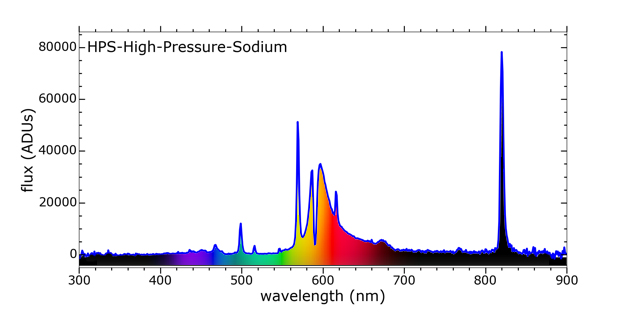
Fluorescent lamp
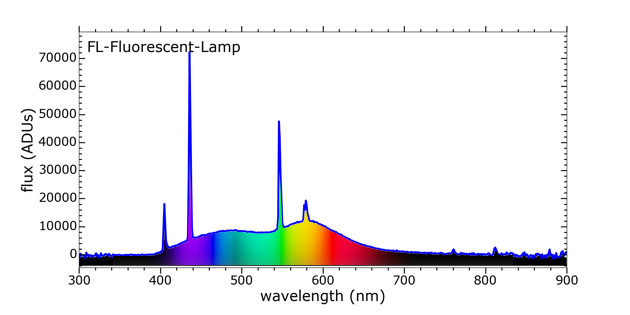
Metal halide
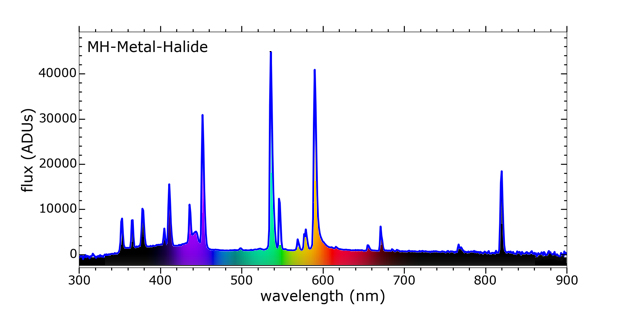
Mercury vapor
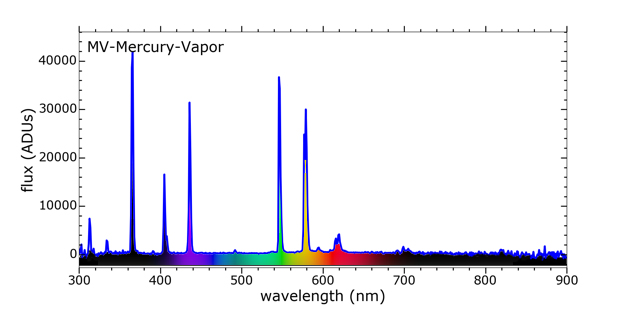
Night sky images obtained from satellites orbiting the Earth show the effects of excessive lighting. These images are a very useful tool to detect where light should be improved. Furthermore, the archives of images taken during recent years allow us to study the evolution of light pollution.
Milan is losing its amber lights
This photograph of Milan was taken after its transition to LED technology in the city centre. The illumination levels appear to be similar or even brighter in the city’s centre than in its suburbs. It is clearly visible that, with the transition to LED technology, the amount of blue light has increased. Unfortunately, this means the negative impact of Milan’s street lighting has increased when it concerns the environment, the ability to see the stars as well as human health.
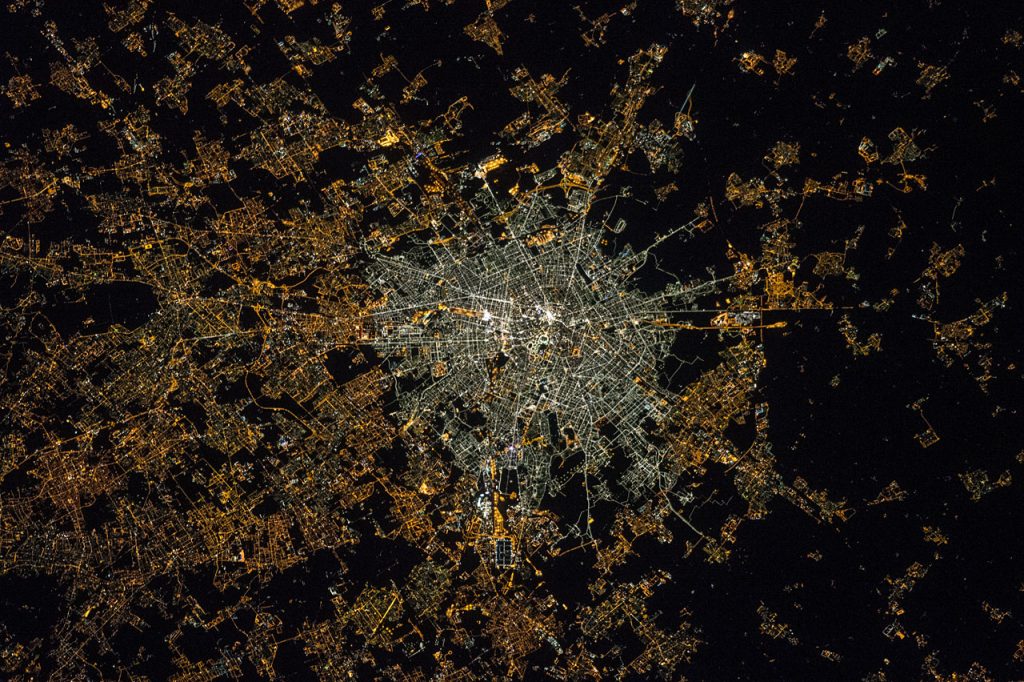
Belgium, Netherlands and Germany
An example of public lighting in different countries seen from the ISS. Belgium uses predominantly orange lighting (low pressure sodium lamps) and illuminates all its highways; as oppose to the Netherlands who illuminates only a few highways. Germany does not light its highways at all and has much lower illumination levels.

Iberian peninsula
The Iberian Peninsula is running out of dark places for star gazing.
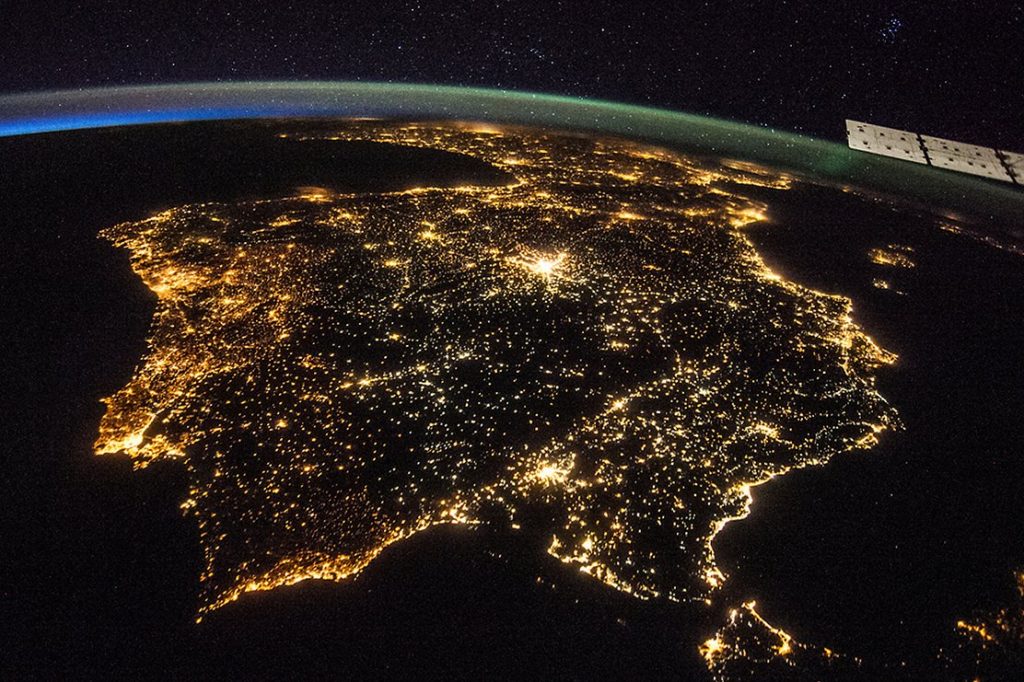
World atlas of night sky brightness
This is the most recent night sky atlas showing illumination around the world. High quality scientific measurements were supplied by the Complutense University of Madrid in collaboration with the Free University of Berlin, Montsec Astronomical Park and the University of Barcelona. 40% of the measurements were taken in the region of Madrid and Berlin. Another 40% of the data was taken in the region of Catalonia. The remaining data was supplied by citizen scientists part of the Globe at Night program. Furthermore, many scientific institutes as well as citizens contributed their data for validation of the final world atlas.

